Here is What You Need to Ensure Your UTM Parameters Will Work
Here is What You Need to Ensure Your UTM Parameters Will Work
You need these 2 components to make sure your UTM parameters will work in Google Analytics:
1. The Google Analytics Javascript Tracking snippet that you usually add to your website to make sure you can track visits and sources.
- The way to add the tracking snippet: when you create a Google Analytics account, go to the Admin section and under Property (see image below) select Tracking Info & Tracking Code. Once this has been added to every page of your website, you are good to go.
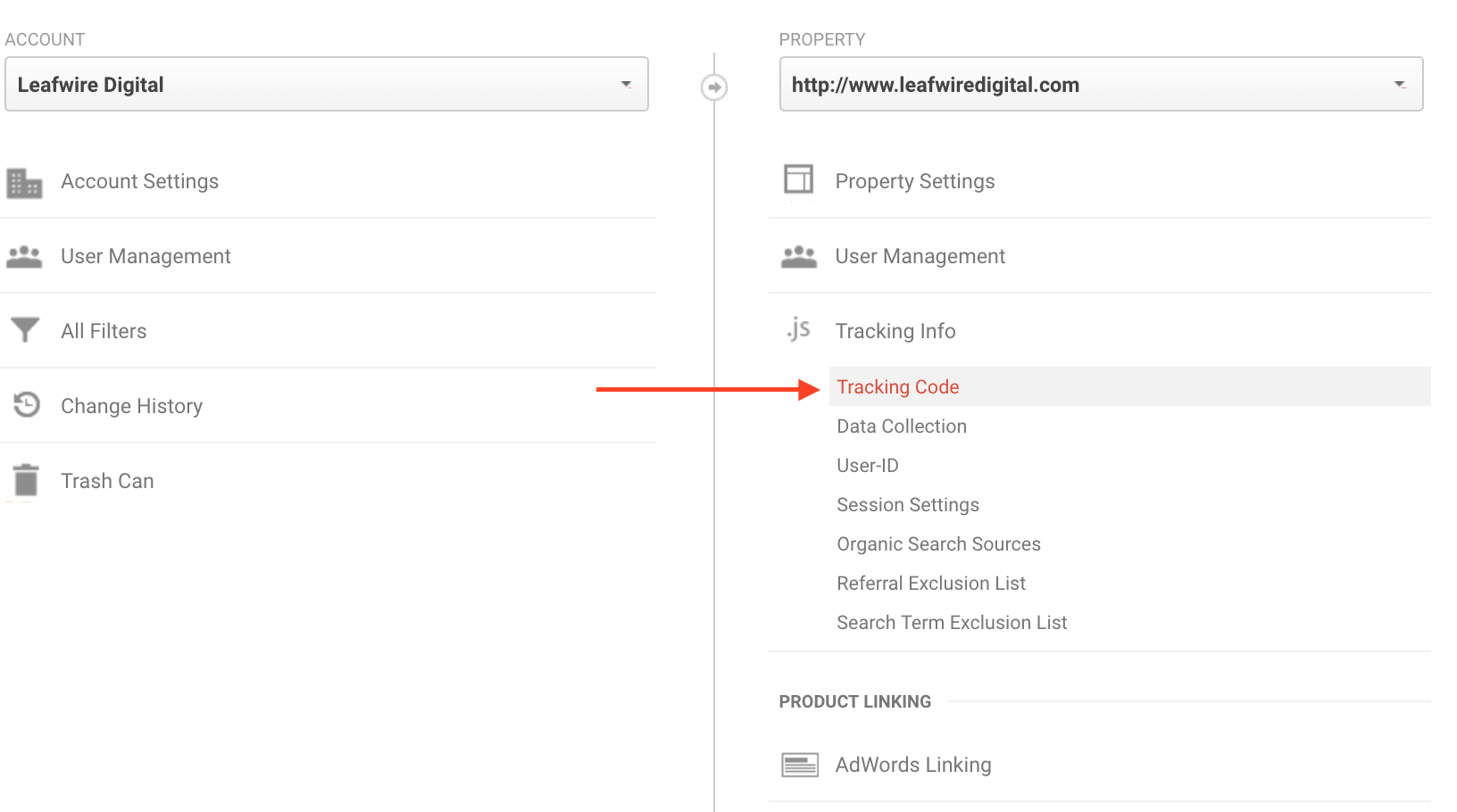
2. You need to tag the links that you will be promoting via email, social media, Youtube, business directories and other paid or organic channels.
The way to “tag” the links by adding UTM parameters: You add these UTM parameters at the end of the URL address of every page before promoting it or sharing it on any other platform:
- utm_source, utm_campaign, utm_medium, utm_term(optional), and utm_content (optional, but recommended)
How it works
Google Analytics reads those parameters, uses them to put tracking links with the same parameters in the same buckets and includes them in its Acquisitions>Campaigns reports that tell you:
- which promotional channel drove the largest number of traffic for this particular page or campaign.
- what were the key demographic, geo and behavioral traits of the audience that came to you from that channel
- if they filled out an online form, etc. as well as how effective your page/content is (bounce rates, time on page, etc.)
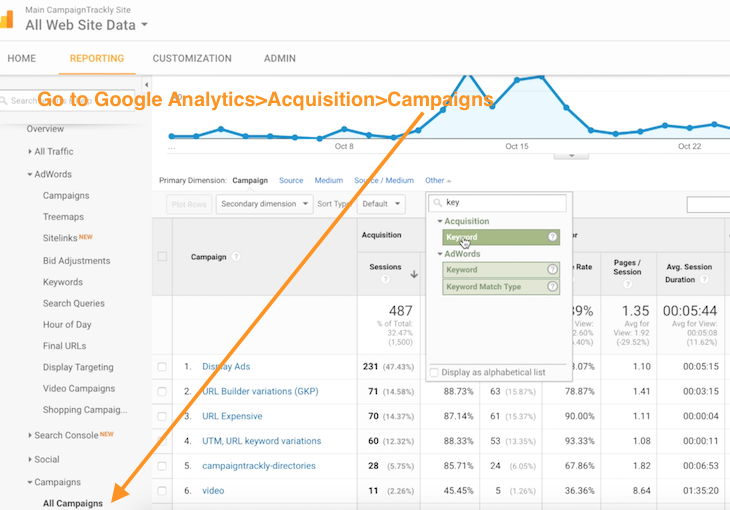
In Universal Analytics, navigate to Acquisition>Campaigns to see your UTM tags and how they contribute to your reports 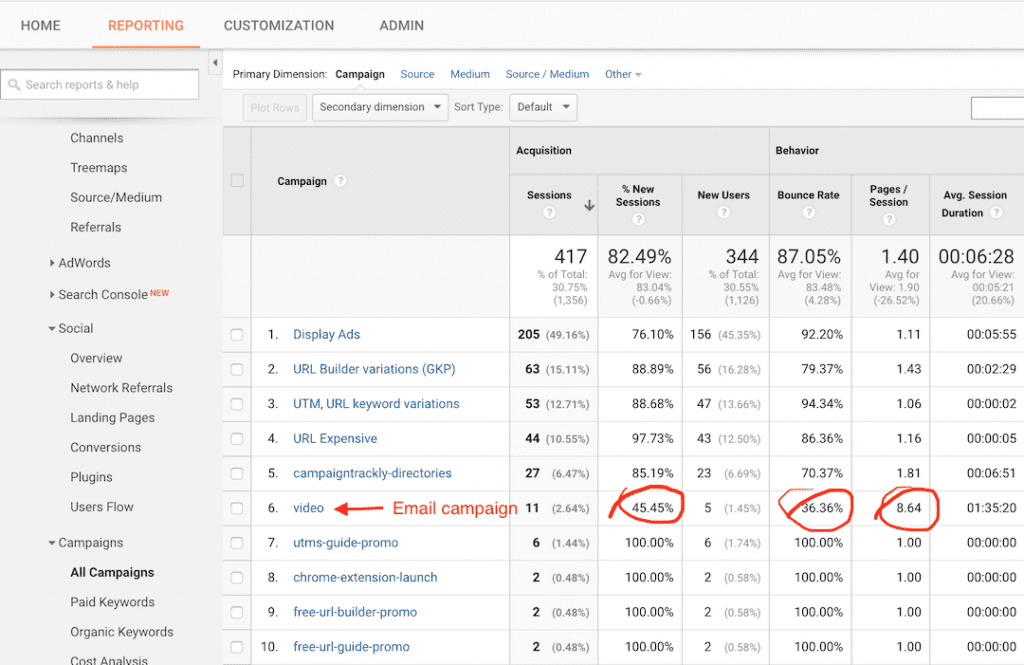
This reports shows that email visits have the lowest bounce rates and tend to be longer 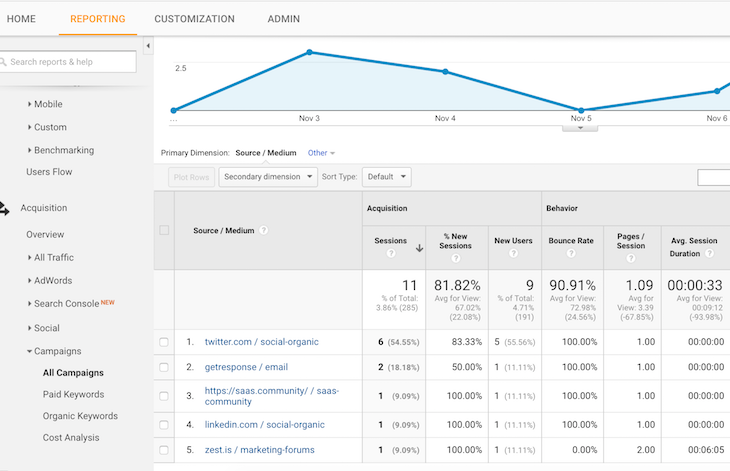
Your UTM Source and UTM Medium insights can be found here 
UTM Term insights will be displayed here 
Your UTM Content insights will be displayed here 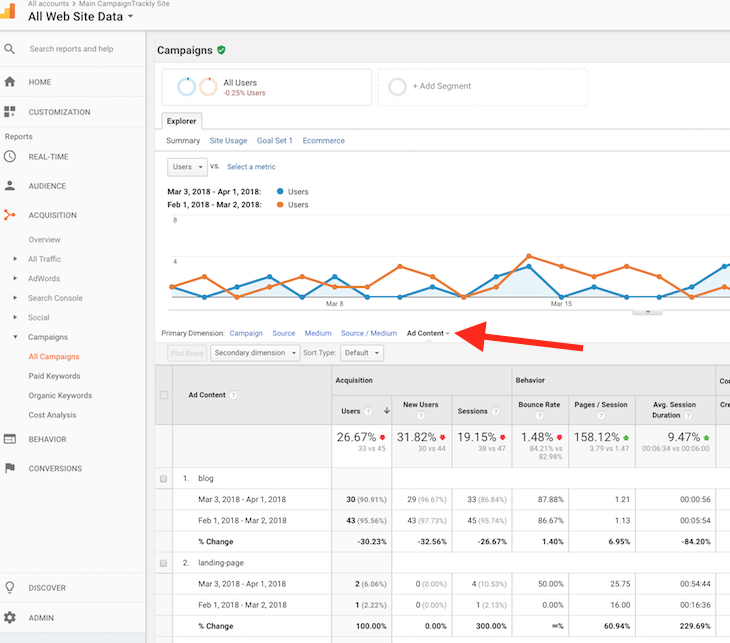
To find your links grouped by UTM_content, navigate to the Ad Content filter
How GA4 will impact the UTM parameters and the insights associated with them
The great news is that the new GA4 platform is definitely devoting both more space and more dimensions to our UTM parameters. Find out more GA4-related UTM link tracking updates here.
